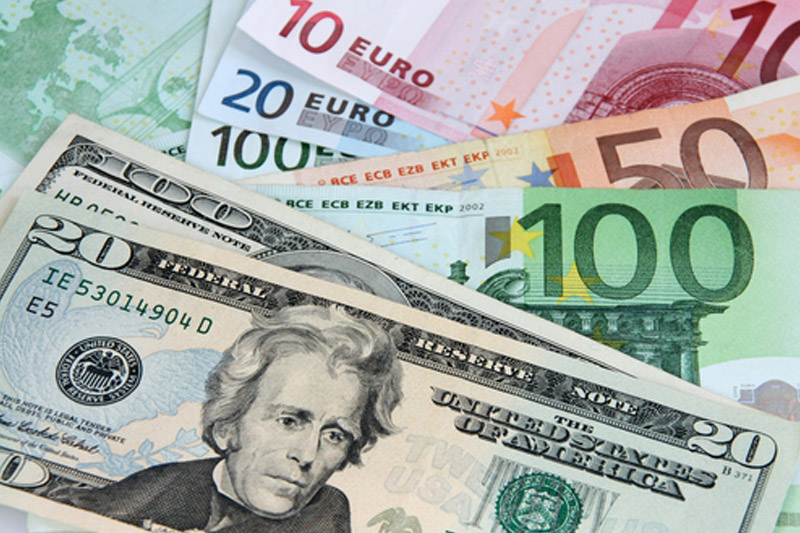Investing.com -- EUR/USD rose considerably on Friday extending its winning streak to a third straight session, as steady gains in the U.S. labor market last month bolstered the case for a September interest rate hike by the Federal Reserve.
The currency pair traded in a range between 1.0856 and 1.0978 during Friday's session, before settling at 1.0961, up 0.0037 or 0.34%. Despite the minor rally at the end of this week, EUR/USD still closed the week virtually unchanged declining by less than 0.10% from its level at the start of Monday's trade. Over the last month, the dollar has gained approximately 0.80% against its European counterpart.
EUR/USD likely gained support at 1.0808, the low from July 20 and was met with resistance at 1.1131, the high from July 27.
On Friday morning, the U.S. Department of Labor's Bureau of Labor Statistics said the number of non-farm payrolls in the nation during the month of July increased by 215,000, in line with consensus estimates of a 212,000 gain. The figure received a boost from a 60,000 gain in Trade & Transportation jobs, as well as a 40,000 increase in Professional & Business service positions. The Labor Department also upwardly revised non-farm payrolls for June by 8,000 to 231,000.
In addition, waged ticked up by 0.2 % after remaining flat in June – representing an increase of 2.1% on a year-over-year basis. The unemployment rate remained unchanged at 5.3%, also in line with consensus estimates of 5.3%. Earlier this week, Fed governor Jerome Powell said he would take a data-driven approach to the timing of a September rate hike, placing particular emphasis on the strength of the labor market over the next month.
The U-6 unemployment rate, a broader gauge of the national employment situation, inched down 0.1% to 10.4% on the moth. The reading, which measures the total level of unemployed workers plus those marginally attached to the labor force, as well as those who are no longer looking for a job but have looked for one over the last 12 months, stood at 12.6% last July. By comparison, the U-6 rate peaked above 17% during the height of the financial crisis. It is also a preferred measure of Fed chair Janet Yellen, as she weighs whether the labor market has improved to the point which would warrant an imminent rate hike.
The dollar, meanwhile, moved broadly higher following the release of the report, before falling back sharply near the close. The U.S. Dollar Index, which measures the strength of the greenback versus a basket of six other major currencies, surged to a four-month high at 98.41 before turning negative for the session at 97.67, down 0.21%.
The report had a muted impact on the government bond market, as yields on U.S. Treasuries remained virtually unchanged at the end of Friday's session. Yields on 2-Year Treasuries, which are typically sensitive to major monetary policy changes from the Fed, initially climbed to 0.75% to move near a four-year high following the release. The U.S. 2-Year, however, ended the session at 0.72%, up only two basis points for the day.
